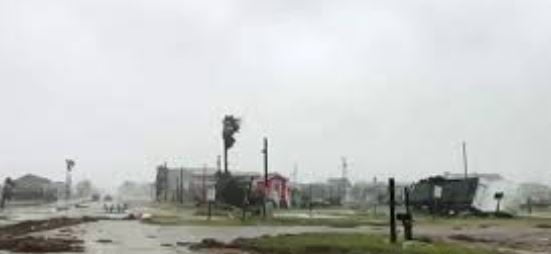A searing heatwave continues to ravage Southeast Texas, compounded by extensive power outages in the aftermath of Tropical Storm Beryl. This dire scenario has left millions of residents enduring sweltering conditions without the comfort of air conditioning. Concurrently, much of the Western United States and Canada face rising wildfire threats due to escalating temperatures.
The Brutal Aftermath of Tropical Storm Beryl
Tropical Storm Beryl’s rampage began on July 8, wreaking havoc across Texas before being downgraded to a post-tropical cyclone. Despite its weakened state, Beryl’s aftermath is palpable. The storm’s ferocity left a trail of destruction, including flooded highways, damaged homes, and downed power lines. Tragically, the storm claimed the lives of seven people in Texas, including two who were fatally struck by fallen trees. Beryl’s path of devastation extended beyond the United States, having already caused 11 fatalities in the Caribbean.
Power Outages and Scorching Heat in Texas
As of July 10, approximately 2 million homes and businesses in Texas remain without electricity, according to Poweroutage.us. The National Weather Service reported that temperatures in the region soared above 100 degrees Fahrenheit (38°C), exacerbating the situation for those without air conditioning. The combination of power outages and extreme heat has created hazardous conditions, particularly for vulnerable populations.
Houston resident Raymond Miller, 46, exemplifies the struggle faced by many. Without power since 6 a.m. on Monday, Miller’s living conditions have become intolerable. “I had trouble sleeping, and the humidity makes it very hard to breathe in my apartment. Opening the windows last night didn’t do anything; it kind of made it worse,” Miller lamented. With no gas available in the area, Miller plans to sit in his air-conditioned vehicle, which has only a quarter tank of gas remaining.
The Western United States Under Siege
The heatwave extends far beyond Texas, with much of the Western United States experiencing record-breaking temperatures. The National Weather Service issued heat advisories affecting 128 million people across the country. Notably, Tecopa, California, recorded the national high of 129°F (54°C) in the Mojave Desert. Other significant temperature records include Las Vegas at 117°F (47°C), Phoenix at 116°F (47°C), and Tucson at 111°F (44°C).
Rising Wildfire Threats in Canada
The oppressive heatwave is not confined to the United States. Western Canada is also grappling with soaring temperatures, which heighten the risk of wildfires. Environment Canada meteorologist Armel Castellan highlighted the critical situation, noting that the heatwave could trigger dry lightning, further exacerbating the wildfire threat. Heat warnings have been issued for parts of British Columbia, Alberta, and Saskatchewan.
As of July 10, Alberta is battling 59 active forest fires, while British Columbia is contending with 97. The village of Lytton in British Columbia, which suffered a catastrophic wildfire in 2021 that destroyed 90% of its structures, recorded the highest temperature in Canada at 39°C (102°F).
Public Health and Safety Concerns
The extreme heat poses significant health risks, particularly for the elderly, children, and individuals with preexisting health conditions. Without access to air conditioning, the risk of heat-related illnesses, such as heatstroke and dehydration, increases substantially. Authorities have urged residents to stay hydrated, seek cooler environments, and avoid strenuous activities during peak heat hours.
Infrastructure Strain and Emergency Responses
The ongoing heatwave and resulting power outages have placed immense strain on infrastructure and emergency services. Power companies are working tirelessly to restore electricity, but the scale of the outages presents a formidable challenge. Emergency response teams are also on high alert, ready to assist those in need and mitigate the impact of the heatwave.
Long-Term Environmental and Economic Impact
Beyond the immediate human toll, the heatwave and associated power outages carry long-term environmental and economic implications. The increased risk of wildfires threatens ecosystems, wildlife, and property. Additionally, the financial burden of disaster response, infrastructure repair, and healthcare costs will be substantial.
Conclusion
As Texas battles oppressive heat and power outages, and Canada braces for potential wildfires, the effects of the heatwave underscore the pressing need for robust emergency preparedness and climate resilience measures. The current crisis serves as a stark reminder of the vulnerabilities in our infrastructure and the critical importance of proactive planning to mitigate the impact of extreme weather events.
Soumya Smruti Sahoo is a seasoned journalist with extensive experience in both international and Indian news writing. With a sharp analytical mind and a dedication to uncovering the truth, Soumya has built a reputation for delivering in-depth, well-researched articles that provide readers with a clear understanding of complex global and domestic issues. Her work reflects a deep commitment to journalistic integrity, making her a trusted source for accurate and insightful news coverage.



